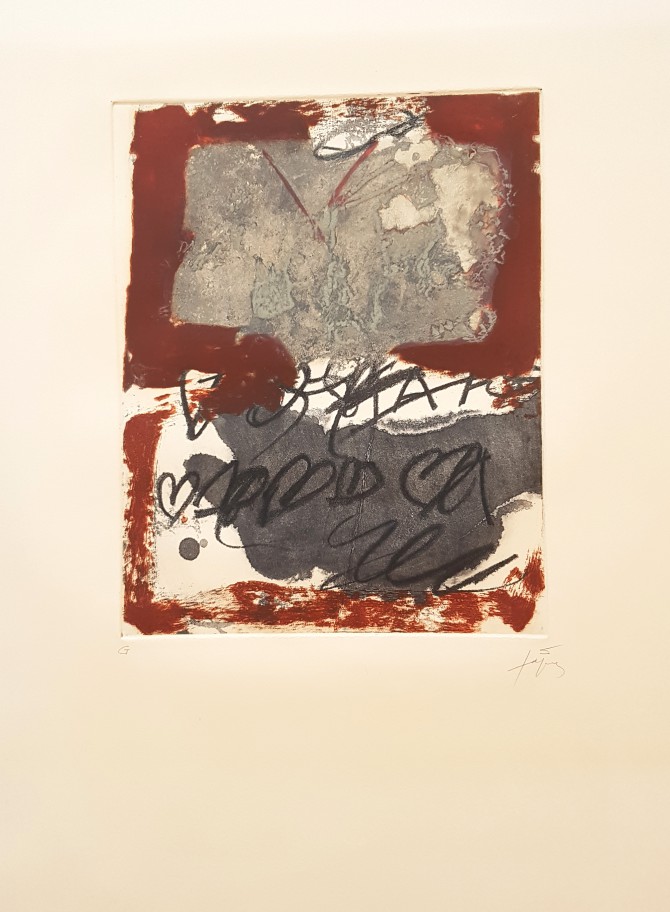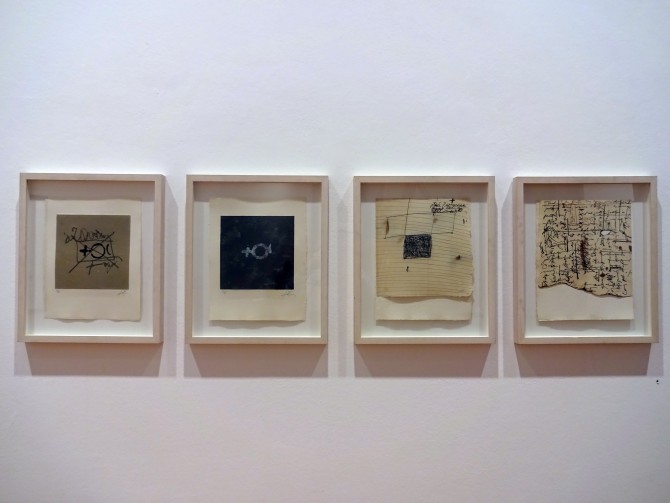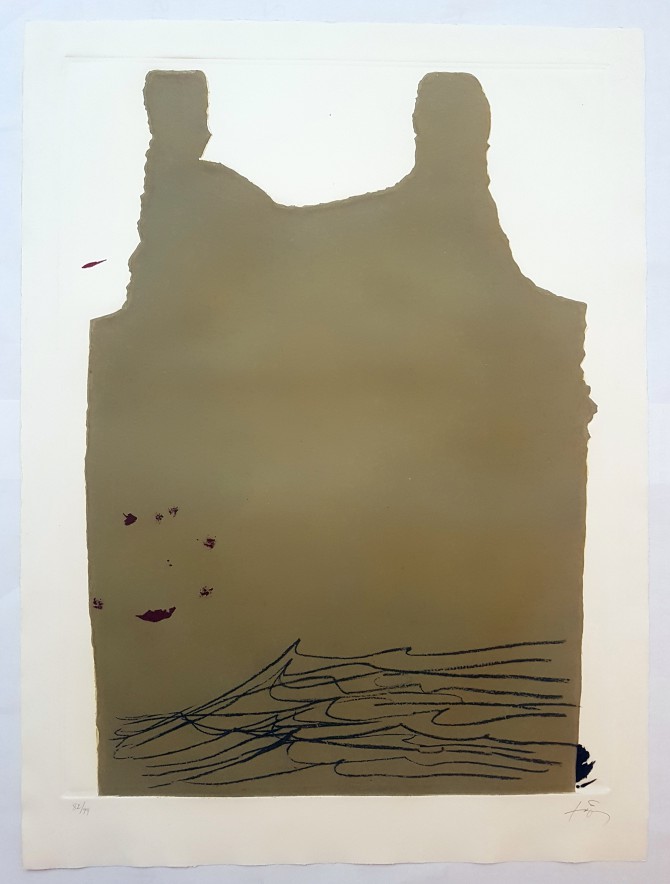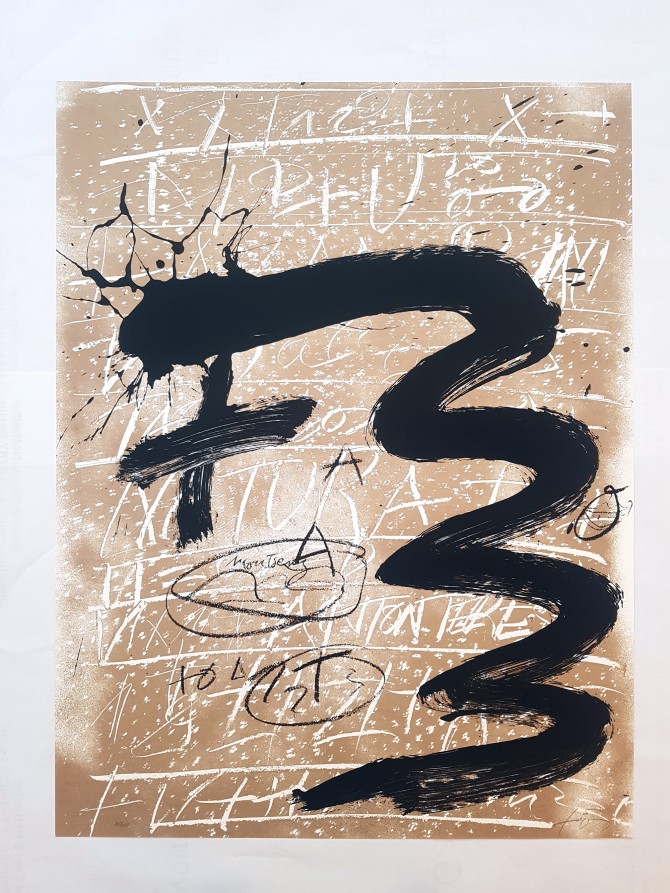Antoni Tàpies




Biography
Since 1934 self-taught drawing and painting
1943-46 unfinished law studies at the University of Barcelona
1945 Creates first works with impasto application of paint and material collages with strings, earth, newspaper and toilet paper
1947 First exhibition at the "October Salon in Barcelona
1949 Participates in the exhibition "Un aspect de la peinture catalane" in Barcelona.
1950 First solo exhibition in Barcelona. Scholarship enables a one-year stay in Paris
1952 Participates in the XXVI Venice Biennale
1953 Exhibition with Martha Jackson, New York. Participates in the Sao Paulo Biennial, where he wins a prize.
1954 Participation in the 27th Venice Biennale.
1959 Participation in documenta 2, Kassel
1960 Participates in the exhibitions "New Spanish Painting and Sculpture" at the Museum of Modern Art, New York, and "Before Picasso-after Picasso" at the Guggenheim Museum, New York 1962 Exhibition at the Guggenheim Museum, New York. First retrospective in Hanover, Kästner Society
1964 Participation in documenta 3, Kassel
1978 First solo exhibition at the Galerie Georg Nothelfer
1979 Member of the Academy of Arts, Berlin
1987 Foundation of the "Fundacio Antoni Tàpies" in Barcelona
1988 Retrospective at the Musée Cantini, Marseille
1993 Golden Lion Venice Biennale
1997 Retrospective at the Museo Precci, Prato
2000 Retrospective at the Museo Nacional Centro Sofia, Madrid, then at the Haus der Kunst, Munich
2004 Retrospective at the Museu d'Art Contemporani de Barcelona (MACBA)
2005 Retrospective at the Hara Museum in Tokyo. Further solo exhibitions at Waddington Galleries, London or at Lelong, Zurich.
Died 2012 in Barcelona
The Catalan painter, sculptor and graphic artist Antoni Tàpies is one of the most important Spanish post-war artists. Tàpies is known for his mixed-media works, which incorporate found objects such as string or rags, as well as natural materials such as clay, marble dust, sand or crushed chalk. This gives his works an often relief-like structure. Social and political themes play an important role for Tàpies, who was critical of the Franco dictatorship. At the beginning of his career, the artist was influenced by the Surrealist tradition. His Catalan compatriot Joan Miró and Paul Klee had a strong influence on him. Later, when his works became more abstract, Tàpies joined the Art Informel movement. Tàpies describes his friendship with the writer and art theorist Miguel Tapié as one of the most fruitful experiences in his development as an artist.
Exhibitions
-
More than 24 #2. Groupshow
10 November 2023 to 1 January 2024
Showroom
-
Tachismus - Informel
27 January to 24 February 2018
Corneliusstraße
-
Antoni Tàpies - Grafiken
20 October to middle of November 2007
Uhlandstrasse
-
Antoni Tàpies zum 80. Geburtstag
31 January to 6 March 2004
Corneliusstrasse
Editions
-
Erscheinungsbild 6, 1982, Engraving signed in pencil Engraving signed and numbered in pencil by the artist, 76 x 56 cm, Copies: 99
-
Anular, 1981, Antoni Tapies - José-Miguel Ullán. Anular. Paris, Éditions R.L.D. 1981. With five etchings, four of them signed (here framed) and one as cover, and graphic works by Antoni Tapies. Leporello in original wrappers and chemise, together in slipcase. One of 35 copies (total edition 150). - Printed on various heavy laid papers, the pages mounted to form a leporello. - "Anular (Annulment or Invalidity) presents the text of an early Spanish constitution as a typewritten manuscript with highlighted short poetic sentences by Ullán and Tàpies symbol-like letters. [...] Parts of the text are torn up, turned upside down or even covered by Tàpie's graffiti. The overall visual impression creates a sense of contradiction and refusal, while at the same time involving an act of suspension"., 32,7 x 24 cm, Copies: 35
-
Aus/From: La Clau del Foc (No.4), 1973, Colour etching with stamping, Galfetti 371, signed by the artist, 61,4 x 45,2 cm, Copies: 26
- More Editionen